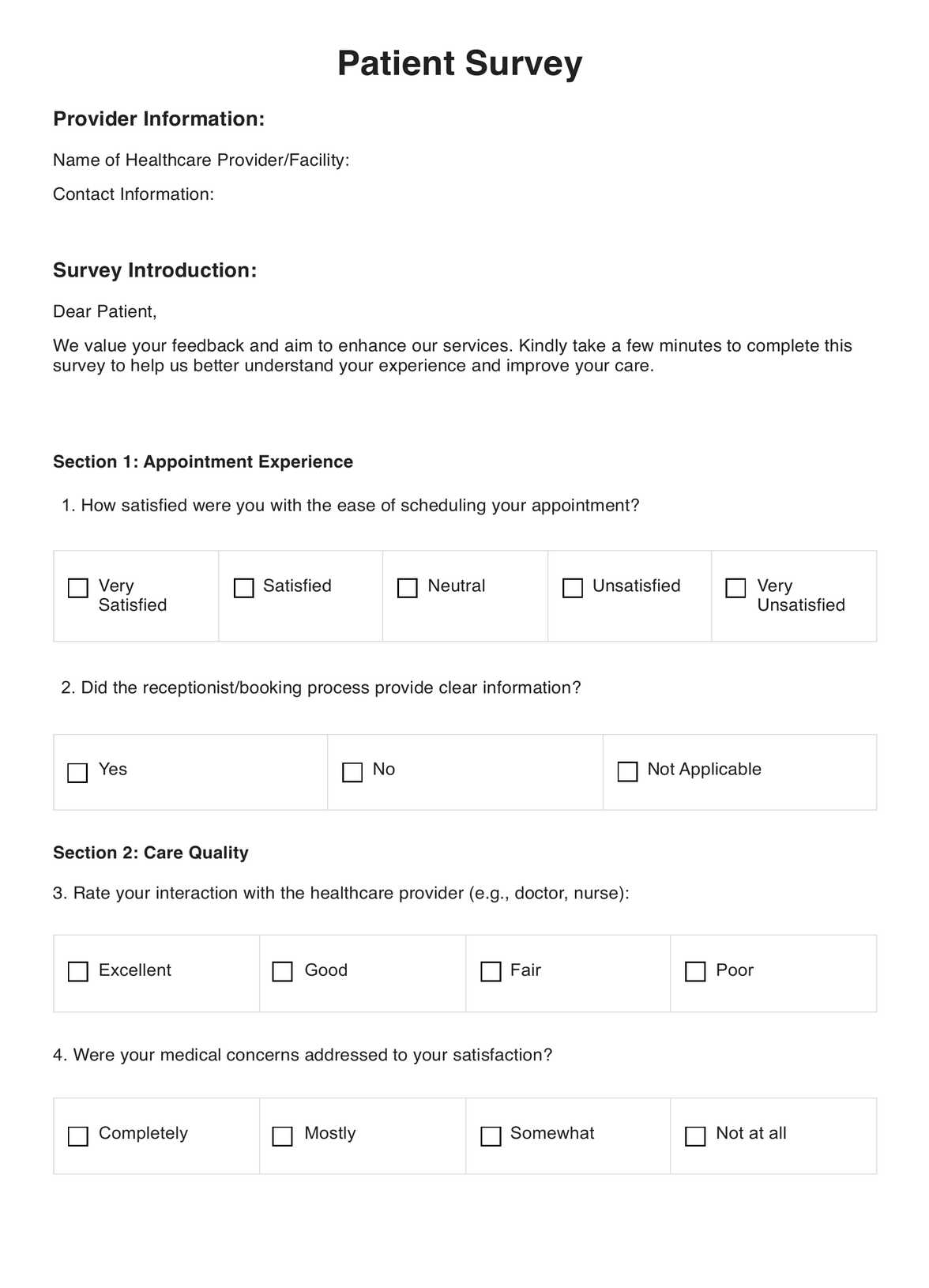Patient surveys are used by healthcare providers, administrators, and organizations to improve patient experiences and optimize care quality.

Patient Surveys
Enhance healthcare quality with patient surveys. Collect valuable feedback to improve patient experiences and tailor care.
Use Template
Patient Surveys Template
Commonly asked questions
Patient surveys are used in healthcare to evaluate experiences and care outcomes. They are used after appointments, hospital stays, treatments, and long-term follow-ups. Surveys help assess satisfaction at different points in the patient's journey.
Healthcare providers collect patient feedback through surveys, which helps identify improvement areas, drive quality enhancements, and improve patient-centered care.
EHR and practice management software
Get started for free
*No credit card required
Free
$0/usd
Unlimited clients
Telehealth
1GB of storage
Client portal text
Automated billing and online payments











